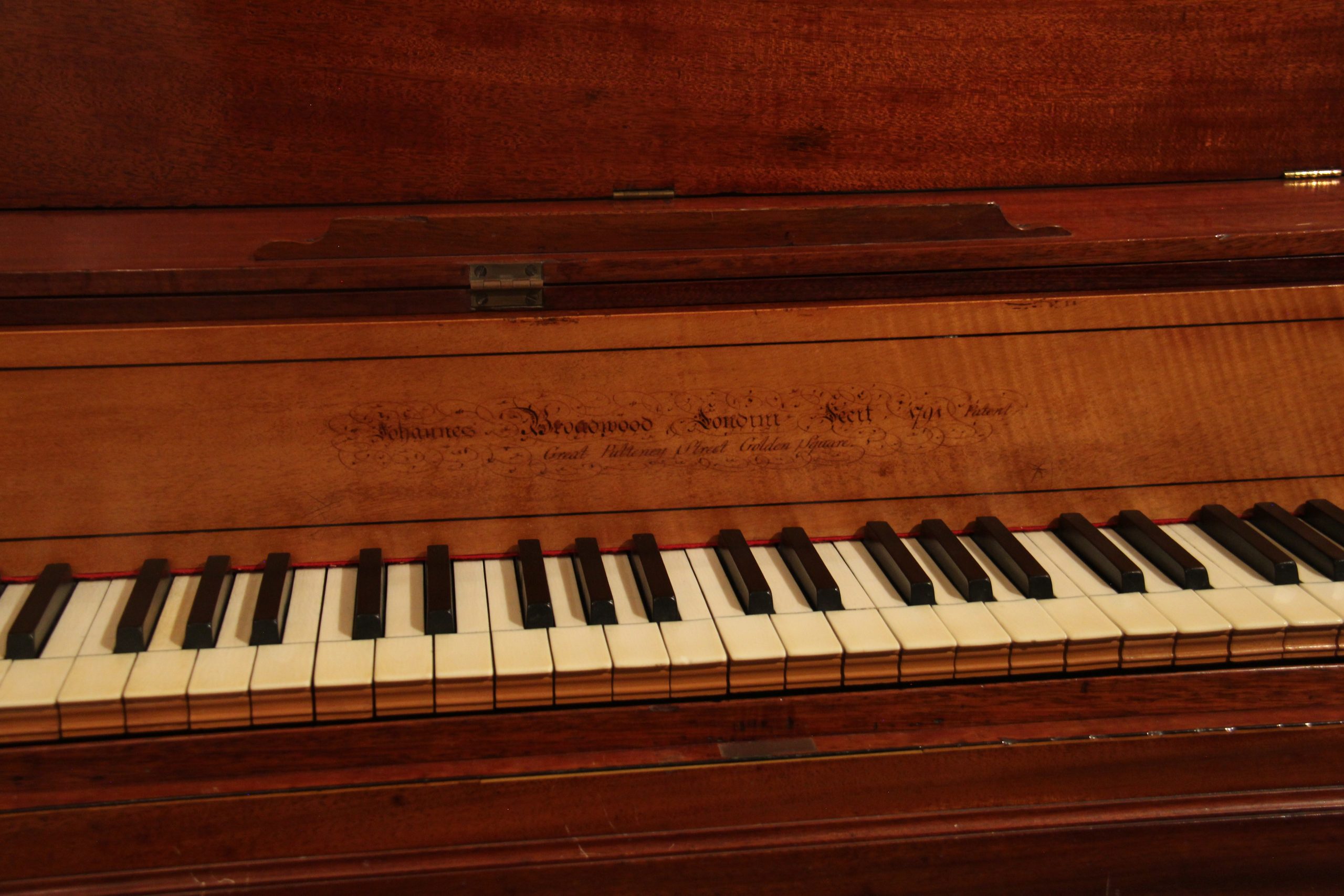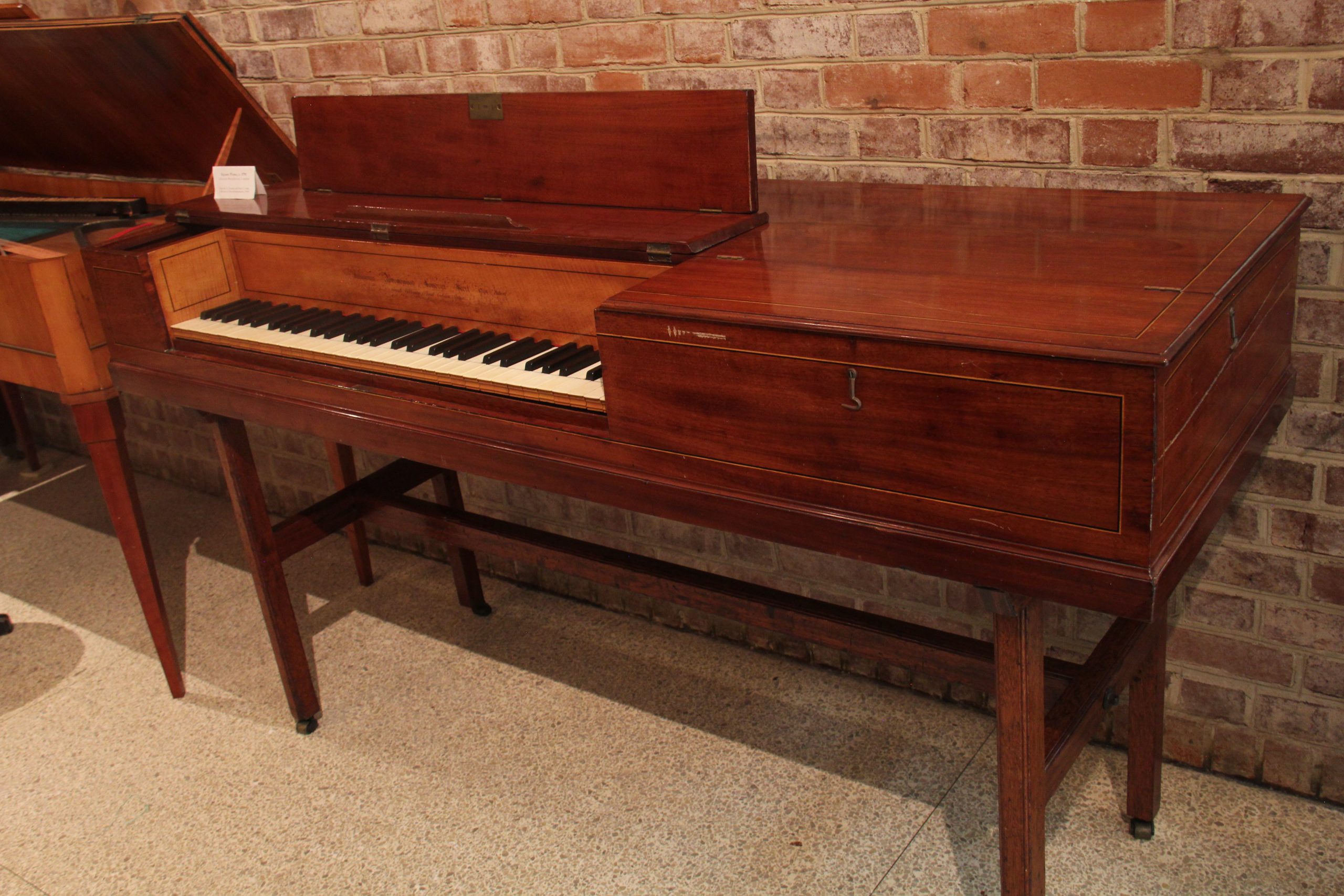Broadwood Square Piano
Details
- Origin: London, England, U.K.
- Date: 1791
- Maker: Johannes Broadwood
- Collection: E 405
Description
Made of mahogany veneer, boxwood, iron, brass, ivory, ebony, and other materials. Has “Johannes Broadwood Londini fecit 1791 Patent / Great Pulteney Street Golden Square” on its name board, has english instructions on the left side and french on the right.
Sonatina Op. 36, No. 3 1st mvmt, Clementi – played by Abby Johnson on the Broadwood Square Piano
In the 1760s, Johannes Broadwood was a harpsichord maker in London, working as a foreman for Swiss-born Burkat Shudi on Great Pulteney Street, when the piano rose to prominence. But in 1769, Shudi’s health was failing, and in 1771 Broadwood was granted the inheritance and the company, taking Shudi’s daughter Barbara as a wife. Shudi passed in 1773, leaving the business to Broadwood alone, despite Shudi having a son, Burkat Shudi Jr., who for some reason was deemed unfit for the inheritance and for running the business. Shudi Jr. worked for Broadwood for over two decades.
Until around 1783, Broadwood only made harpsichords, inscribing “Burkat Shudi et Johannes Broadwood” on all of his instruments, but from the 1770s onwards some of his clients also asked him to tune, repair, transport, or trade square pianos, made at the time by Zumpe & Buntebart, Pohlman, Beck, or Beyer. Broadwood therefore gained much experience with square pianos, and decided to make his first in 1780. By the 1790s in was producing around 400 square pianos and 100 grand pianos every year, and in 1808 he renamed the company “John Broadwood & Sons” when his sons joined him, James from his first marriage and Thomas from his second to Mary Kitson. Together, they made John Broadwood & Sons the largest piano manufacturer in the world, and their square pianos were their best-selling products until 1850.
Pianos created a whole new culture of their own, being owned by some of the greatest composers early on and found in theaters and gardens and concert halls. Square pianos typically nestled themselves in homes. This square piano in particular, called a “playing-card square,” was supposed to be shipped to France, but never made the journey.
Sources
Cole, Michael. “John Broadwood.” Square Pianos. Accessed June 21, 2022. https://www.squarepianos.com/broadwood.html.
Cole, Michael. “Square Pianos – a Short History.” Square Pianos, February 2022. https://www.squarepianos.com/square.html.
“Square Piano.” The Met. The Metropolitan Museum of Art, 1985. https://www.metmuseum.org/art/collection/search/504241.



